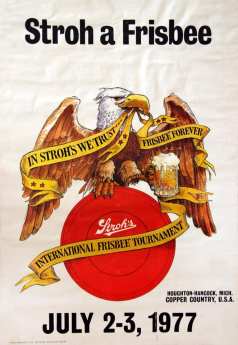“He was not bone and feather but a perfect idea of freedom and flight, limited by nothing at all.” – Jonathan Livingston Seagull.
Historians often find themselves speculating when attempting to assemble the past. Only in retrospect do we recognize the true importance of historical events. It is important to record history from those who have witnessed or been part of significant moments. Otherwise, the subtleties of those moments can be lost. This site provides reliable information that helps to clarify what is currently known about the origins of early frisbee play and the first flying disc sports. The site also features a timeline of events that led to the introduction of all disc sports, which originated in the United States and Canada.
The Counterculture and Early Frisbee Pioneers.
“I do not exist to impress the world. I exist to live my life in a way that will make me happy.”
When discussing frisbee and disc sports, people often use words like “hippie,” and “counterculture.” However, few have delved into the origins of these sports and how they came to be. Contrary to popular belief, it wasn’t just a matter of the countercultural and hippies creating alternative sports. Rather, it was alternative-minded athletes inventing new sports using flying discs.
“As a non-competitive athletic play in the 1960s, freestyle playing with a Frisbee was the perfect activity and athletic alternative for the counterculture.”
In the 1960s, young people who felt alienated from social norms formed a counterculture in search of alternatives. The forms of escape and resistance manifest in many ways, including social activism, alternative lifestyles, experimental living through foods, dress, music, and alternative recreational activities, including throwing a Frisbee.
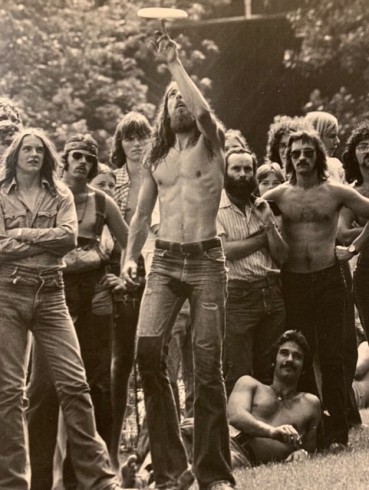
The popularity of frisbee among the countercultural community was driven by the sight of young people with long hair, no shoes, and wearing tie-dye clothing, tossing Frisbees in parks, on campuses, and at music festivals. During the 1970s, modern frisbee sports were created and played by alternative disc athletes, as an alternative to traditional ball sports. Upon further examination, it became clear that the initial assumptions about Frisbee players were inaccurate. It was believed that Frisbee players were only non-athletic hippies who couldn’t play traditional sports. However, this was not the case. Many early Frisbee disc athletes were former ball athletes who embraced the alternative culture of the 1960s. These individuals participated in a variety of disc sports and individual events. Playing with a Frisbee in the 1950s and ’60s was not initially competitive, but rather about enjoying the activity of throwing a flying disc. As the sport progressed, skilled disc athletes began to organize and compete in early frisbee competitions.
The Frisbee Experience.
“When a ball dreams, it dreams it’s a Frisbee.”– Stancil Johnson.
There is a uniquely different experience when playing with a flying disc than the ballistic trajectory of the ball. The flying qualities of the disc capture our imagination and fascination with flight. People frequently dream that they are flying, no one ever dreams of rolling or bouncing around like a ball.
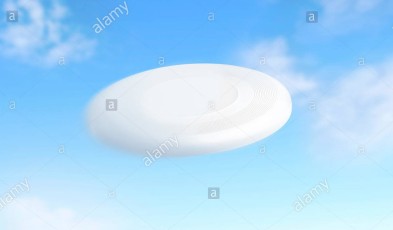
This sensation experienced by throwing a flying disc created the frisbee fad of the 1950s-60s and continues to be the primary motivation for disc sports athletes today. Jared Kass, an early ultimate pioneer, once tried to explain how he felt when throwing and catching a flying disc, ”I leaped up and said, “This is the ultimate” and felt and experienced it.” The ultimate play that Kass felt was the flying sensation that players experience when throwing and catching a flying disc. Aside from a set of rules and competitive scoring, every disc sport includes this additional playing sensation. History of Ultimate.
Freestyle – the First Frisbee Play.
“Play catch, invent games. To fly, flip away backhanded; flat flip flies straight; tilted flip curves-experiment!” – Wham-O Frisbee.
Since the mid-1960s, the back of the Frisbee has featured an inscription of the original playing instructions. The playing instructions, dating back to the 1950s, was the first frisbee play that grew into what we now know as freestyle.
“Freestyle is the Mother of all disc sports.”
Before the advent of modern disc sports, there was throw-and-catch flow freestyle (pre-nail delay). The origins of all disc sports can be traced back through the history of freestyle, which began in the 1950s. Sports such as guts, disc golf, and ultimate all utilize throwing techniques invented and developed by early freestylers. These disc sports have largely adopted the playing formats of traditional ball sports, replacing the ball with a flying disc. When early freestylers weren’t playing freestyle, they often engaged in other disc sports, like guts, ultimate, and disc golf. Early freestyling with a flying disc was a highly skilled activity that involved complex throwing and catching challenges. History of Freestyle.
1960s Frisbee and Disc Sports First Disc Athletes.
“Some of the greatest Frisbee players of all time were the early alternative disc athletes from the 1960s and 70s that played all the disc sports.”
There’s an existing myth that early frisbee players were all dope-smoking hippies and that real athletes eventually came and took the sport away from the hippies and created modern disc sports. This could not be further from the truth.
All sports, including disc sports, have their share of non-athletes who play recreationally. The first disc athletes considered alternative in the beginning days of Frisbee and disc sports were excellent athletes. As can be seen in early films, these frisbee pioneers could match up with any of today’s top players in any disc sport or event.
Experimenting with ‘throw and catch’ freestyle, at the beginning of disc play in the 1950s-60s predates all of today’s popular modern disc sports. Freestyle competitions and the touring freestyle performers in the 1970s were the beginning of showing people that the Frisbee was more than just a toy to be used for recreation.
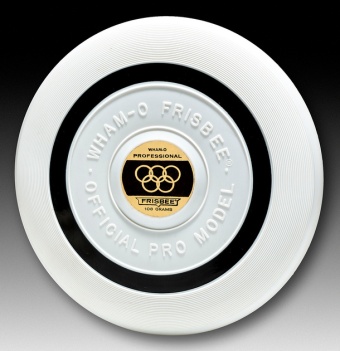
By the 1960s, while the Frisbee was still considered a toy and a fad, Frisbee’s first exceptional disc athletes were beginning to appear and get noticed.
Beginning their frisbee play in Michigan in the 1960s and moving to Toronto in 1970, early disc sports pioneers Ken Westerfield and Jim Kenner played freestyle and object hole disc golf on a course they designed in Toronto’s Queen’s Park. Already touring and performing exhibitions as Frisbee Professionals across Canada for Irwin Toy, Ken, and Jim created early annual Frisbee competitions in Toronto and Vancouver, BC.
During that same period, Victor Malafronte and John Weyand of the Berkeley Frisbee Group (BFG) had also raised Frisbee tossing and catching to a delicate art form of flowing throws and receptions and playing object disc golf on a UC Berkeley campus course.
In the 1970s, Vaughn Frick, John Sappington, and Scott Dickson were doing creative trick throws and fancy frisbee catching on the campus of the University of Michigan.
Gerry Lynas and Kerry Kollmar were influential early freestylers in New York. They initiated play in Central Park and Washington Square, mentoring future freestyle champions.
Dan Roddick’s father, Papa Jack, gave 5-year-old Danny one of Fred Morrison’s original plastic flying saucer discs for Christmas in 1953. That Flyin’ Saucer became part of their regular family fun activities. By the early 1970s, Dan Roddick included individual disc events at his Pennsylvania and New York State Frisbee Championships. Other disc sports athletes were the early guts players at the International Frisbee Tournament (IFT) in Northern Michigan.
The IFA Newsletter helped to bring these groups together. It led Victor Malafronte to the 1973 Canadian Open Frisbee Championships in Toronto where he met Ken Westerfield and Jim Kenner. In response to meeting Victor, Ken trekked to the West Coast later that year to meet and play Frisbee with the Berkeley Frisbee Group (BFG) players. They exchanged volumes of information about Frisbee styles, techniques, and activities.
In response to meeting Victor, Ken trekked to the West Coast later that year to meet and play Frisbee with the Berkeley Frisbee Group (BFG) players. They exchanged volumes of information about Frisbee styles, techniques, and activities.
The IFA and its newsletter helped the University of Michigan guys get in contact with the Humbly Guts team and get involved with the IFT, where they met even more frisbee players like John Connelly, Alan Blake, and Tom Cleworth of the Highland Avenue Aces guts team. The exchange of ideas about creative throwing and catching grew substantially during this period. Dan “Stork” Roddick met Spyder Wills at Laguna Beach for some Frisbee play and was highly influenced by the graceful and beautiful playing style that Spyder showed.
The players referenced above were some of the first to be recognized as the best frisbee players at the introduction of modern disc sports. – Decade Awards – Top Players Before 1976.
Freestylers Were the Early Top Disc Athletes.
“The most thrilling aspect of any disc sport is the satisfaction of watching the Frisbee fly exactly as you intended.”
From the early 1970s, multi-event tournaments centered around the popular freestyle events. Freestyle disc athletes who played other disc sports presented the first excellent disc skills in these new disc sports.
“Freestyle produced some of the earliest skilled disc athletes for all the disc sports.”
Because today’s freestyle focuses mostly on the nail delay, freestyle doesn’t get the throwing legacy it deserves. History acknowledges that early freestyle specialists in the 1960s and 70s invented the throwing techniques used in today’s popular disc sports. In the early days when freestylers transitioned to playing other disc sports, such as ultimate and disc golf, they brought their freestyle throwing and catching skills. As a result, freestylers who participated in other disc sports had an advantage over players with no freestyle experience.
These notable freestyle disc athletes were also competitive superstars for all the early disc sports. – Doug Corea, Dave Marini, Jens, and Erwin Velasquez, Jeff Jorgenson, Tom Kennedy, John Weyand, Victor Malafronte, Tom Shepard, Steve Gottlieb, Johnny Jewell, John Mortimer, Gary Perlberg, Jeff Soto, Tom McRann, Danny McGinnis, Dan Roddick, Irv Kalb, Don Vaughn, Don “Rocket” Hoskins, Michael “Muck” Young, John Bird, Jon Cohn, Jim Herrick, Cyndi Birch, Michelle Pezzoli, Monika Lou, Bill King, Jim Brown, John Anthony, Tom Wingo, Moises Barbara Alfaro, Krae Van Sickle, Mark Danna, Kerry Kollmar, Peter Bloeme, Freddie Haft, John Kirkland, Ken Westerfield, Mary Kathron, Gail McColl, Jim Kenner, John Connelly, Tom Cleworth, Bruce Koger, Jose Montalvo, Chau Rottman, Alan Blake, Marie Murphy, John Sappington, Scott Dickson, Vaughn Frick, Jo Cahow, “Igor” Harper, Don Cain, Ronnie Dorn, Jamie Moldt, Bill O’Dell, Gerry Lynas, and Tom Monroe.
The Frisbee Family and their Spirit of Play.
“Having referees leads to testing the limits, but when it comes to matters of one’s honor, it becomes a different story.”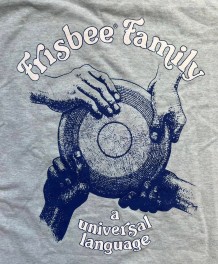
During the days of frisbee and the first disc sports, the tournament-touring community of disc athletes considered themselves a Frisbee Family.
You cannot overemphasize the impact that alternative athletes from that era had on the first disc sports. Being obsessed with winning at any cost wasn’t in their game. The early alternative disc athletes played hard but were never overly aggressive, in play or attitude, especially in team disc sports like ultimate. The conduct of a player while competing was and still is as important as winning.
“Until 1978, the spirit of competitive conduct, which had yet to be officially defined or named, was more about the spirit of the disc athletes alternative to traditional sports competitions, than the actual disc sports.”
An athlete’s performance and spirit of play which eventually was recognized and called Spirit of the Game for ultimate, evolved from the counterculture and alternative playing appeal for disc athletes in all the early disc sports. It was officially defined for ultimate and included in the 7th edition of the 1978 Official Rules for Ultimate. SOTG also has an Integrity Rule, where players are expected to call themselves when they commit a foul, giving the fouled player the option. In the AUDL, where referees are used, this option overrules calls made on the field by the referees and is used frequently during games. ultimate also honors players and teams with Spirit Awards.
“A competition has many moments to be won or lost. The final score at the end of the game is only one of those moments.”
The first official recognition of an alternative competitive spirit in a disc sport. – All players are responsible for administering and adhering to the rules. Ultimate relies upon a Spirit of the Game that places the responsibility for fair play on every player. It is trusted that no player will intentionally break the rules; thus there are no harsh penalties for breaches, but rather a method for resuming play in a manner that simulates what would most likely have occurred had there been no breach. Highly competitive play is encouraged, but should never sacrifice the mutual respect between players, adherence to the agreed-upon rules of the game, or the basic joy of play. – Ultimate’s Spirit of the Game (SOTG).
Early Frisbee Play and the beginning of Modern Disc Sports, the 1960s.
“The Frisbee was invented in the 1950s and gained popularity as a recreation in the 1960s. As players developed their throwing skills, it was inevitable that former ball-minded athletes would choose to replace the ball in various sports with the newly invented flying disc.”
According to multiple sources, such as The Complete Book of Frisbee, Tin Lid Golf was played in 1926 by students in Bladworth, Saskatchewan, Canada.
It was the first organized game, uniformly played with a flying disc-like object, and is the earliest record of a pre-modern flying disc game. In 1926, Ronald Gibson and a group of his Bladworth Elementary School buddies played a game of throwing tin lids into 4-foot wide circles drawn into sandy patches on their school grounds. They called the game Tin Lid Golf and played fairly regularly. However, after they grew older, the game ended, and they went their separate ways. We don’t have the historical connecting dots from Tin Lid Golf 1926 to the beginning of modern disc sports, but it doesn’t mean they were not there. As mentioned in the introduction, uncovering history from the future can be challenging. It is possible that someone who used to play Bladworth Tin Lid Golf moved to the East Coast of the United States for some reason and introduced the game of pie tin tossing at prestigious universities such as Yale and other Ivy League institutions. However, we do not have any evidence to support this. – Pie Tin Tossing at Yale.
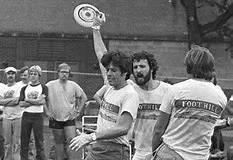
The November 1969 “All Comers” meet in Brookside Park in Pasadena, California, advertised a “Style throwing and catching” activity area and also a “Free exercise” activity area beside the other more traditional Frisbee events like guts, distance, and accuracy. There were a few guts and distance tournaments in the 1960s, but Frisbee and modern disc sports were invented, developed, and promoted in the U.S. and Canada during the early 1970s.
The IFA Newsletter made its debut in 1968. Stories of Frisbee activities, including stories about people who could throw a Frisbee in different ways and could make fancy trick catches, circulated. The Frisbee community found out about the early Frisbee tournaments. The International Frisbee Tournament (IFT), guts Frisbee competitions in the Upper Peninsula of Michigan, the Canadian Open Frisbee Championships in Toronto, and Wham-O’s National Junior Championships.
In 1970, the first object target disc golf courses were designed in Rochester, NY, Toronto, ON, and Berkeley, CA. Jim Palmeri established an 18-hole object target course, and in the early 1970s began producing local disc golf competitions in Rochester, NY. Ken Westerfield and Jim Kenner designed an object-target disc golf course in Queen’s Park, Toronto. Ken and Jim introduced disc golf competitions with other disc sports at their Canadian Open Frisbee Championships in Toronto and Vancouver, BC. The Berkeley Frisbee Group established their object target disc golf course on the UC Berkeley Campus in California. Today disc golf is played in over 40 countries with a popular PDGA professional tour.
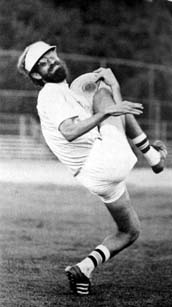
Modern Disc Sports Pioneers in the 1970s and the First Multi-Event Competitions.
“Every person, all the events of your life are there because you have drawn them there. What you choose to do with them is up to you.” – Richard Bach.
Organized modern disc sports, beginning with promotional efforts from Wham-O (U.S.A.) and Irwin Toy (Canada), a few tournaments, and professionals using Frisbee show tours to perform and promote disc sports at universities, fairs, and sporting events. The beginning of all the disc sports were the early player pioneers and their multi-event tournaments.
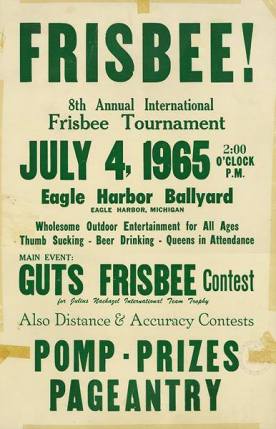 The first competitions and tournament directors to showcase the Frisbee in disc sports were the Healy family and the International Frisbee Tournament (IFT) in Eagle Harbor, Michigan. Ken Westerfield and Jim Kenner’s Canadian Open Frisbee Championships, Toronto (1972) and Vancouver, BC (1974). Dan Roddick and Flash Kingsley’s Octad and Jersey Jam, New Brunswick, NJ (1974). Jim Palmeri’s, American Flying Disc Open, AFDO, Rochester, NY (1974). Ed Headrick and Dan Roddick’s Wham-O World Frisbee Championships, Rose Bowl, Pasadena, CA (1974). Humblies Guts Team, University of Michigan Indoor Frisbee Festival, Ann Arbor, MI. These were the earliest disc sports multi-event competitions on the tournament trail for the first disc athletes and the beginning of all disc sports. Guts, freestyle, disc golf, ultimate, double disc court (DDC), and several Frisbee individual events like accuracy, distance, MTA, TRC, and discathon. Not only did these early multi-event tournaments present all of the first modern disc sports to the world, but the tournament directors were also the pioneer founders of the first modern disc sports and events.
The first competitions and tournament directors to showcase the Frisbee in disc sports were the Healy family and the International Frisbee Tournament (IFT) in Eagle Harbor, Michigan. Ken Westerfield and Jim Kenner’s Canadian Open Frisbee Championships, Toronto (1972) and Vancouver, BC (1974). Dan Roddick and Flash Kingsley’s Octad and Jersey Jam, New Brunswick, NJ (1974). Jim Palmeri’s, American Flying Disc Open, AFDO, Rochester, NY (1974). Ed Headrick and Dan Roddick’s Wham-O World Frisbee Championships, Rose Bowl, Pasadena, CA (1974). Humblies Guts Team, University of Michigan Indoor Frisbee Festival, Ann Arbor, MI. These were the earliest disc sports multi-event competitions on the tournament trail for the first disc athletes and the beginning of all disc sports. Guts, freestyle, disc golf, ultimate, double disc court (DDC), and several Frisbee individual events like accuracy, distance, MTA, TRC, and discathon. Not only did these early multi-event tournaments present all of the first modern disc sports to the world, but the tournament directors were also the pioneer founders of the first modern disc sports and events.
Media and Promotion.
In the early to mid-1970s, several player frisbee publications became available to help promote disc sports and tournament events. Beginning in 1976, Frisbee World Magazine with Dan “Stork” Roddick as the editor. In the 1980s, Chris Lowcock published DisKraze Magazine in Canada. These publications provided tournament dates, competition finishes, player bios, and stories. This helped to provide the information needed for the early growth of frisbee and flying disc sports.
A few posters from landmark historical disc sports tournaments from the 1970s -80s
Founders – Pioneers – First Events – Organizations.
The players, promoters, and historic events that shaped the transition from playing with a flying toy to modern disc sports.
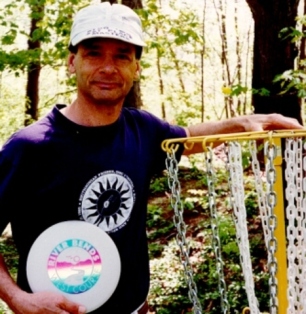
The Healy family (guts frisbee and IFT). Ken Westerfield (ultimate, freestyle, disc golf, Canadian Open Frisbee Championships, Toronto, and Vancouver). Jim Kenner (Discraft, ultimate, disc golf, freestyle, Canadian Open Frisbee Championships, Toronto, and Vancouver). Jared Kass, Joel Silver, Bernard “Buzzy” Hellring, Jonny Hines, and Johnny Appleseeds (ultimate). Tom Kennedy, Irv Kalb, Dan Roddick (Ultimate Players Association). Dave Marini (Freestyle Players Association, FPA). Jim Palmeri (AFDO, disc golf, DDC, and freestyle). Dan Roddick (Octad, WFC, IFA, UPA, Frisbee World, and WFDF). Ed Headrick (Wham-O, IFA, WFC, and disc golf). Tom Monroe (Frisbee South events and disc golf). Tom Schot (disc golf and Santa Cruz World Disc Championships). These were Frisbee and disc sport’s earliest pioneers. Excelling with the Frisbee when it was still considered a toy, they produced the formats and competitive concepts through their tournaments and organizations that led to the modern disc sports we see today.
Touring Frisbee shows in the 1970s-80s.
Freestyle frisbee emerged as the first form of frisbee play in the 1950s and 60s, introducing a sense of novelty. In the 1970s, skilled players refined their abilities and began organizing frisbee shows that toured the world. They showcased their skills at various events, including fairs, universities, shopping malls, and professional sporting events.
In 1971, the first frisbee shows were with Ken Westerfeld and Jim Kenner performing street shows in cities across Canada. In 1972, they signed with Irwin Toy, the Wham-O Frisbee licensee in Canada, to tour and promote the Frisbee. Also, that same year, Northern California players Mike and Bill Schneider toured for Wham-O Frisbee affiliates in Europe. This was the beginning of frisbee experts exhibiting the possibilities of playing with a flying disc.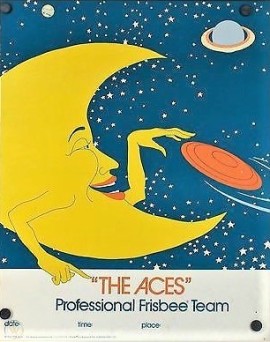 Frisbee shows gave the public a preview of disc sports to come. Some other famous touring frisbee shows were. Frisbee South, Good Times Professional Frisbee Show, The Spinning Bees, The Aces, The Flying Aces, and The Jammers. Wham-O (USA) and Irwin Toy (CANADA) organized several national and international frisbee show tours. There were also sponsored traveling frisbee shows for major companies like Coca-Cola, Orange Crush, Copper Tone, Molson, Labatt’s, Budweiser, Lee Jeans, and pre-game shows with the Harlem Globetrotters. Company-sponsored show tours would reach millions of people in every city and small town across North America and eventually the World. The early frisbee freestyle shows deserve credit through their performances and publicity for bringing awareness to this new age of flying disc sports.
Frisbee shows gave the public a preview of disc sports to come. Some other famous touring frisbee shows were. Frisbee South, Good Times Professional Frisbee Show, The Spinning Bees, The Aces, The Flying Aces, and The Jammers. Wham-O (USA) and Irwin Toy (CANADA) organized several national and international frisbee show tours. There were also sponsored traveling frisbee shows for major companies like Coca-Cola, Orange Crush, Copper Tone, Molson, Labatt’s, Budweiser, Lee Jeans, and pre-game shows with the Harlem Globetrotters. Company-sponsored show tours would reach millions of people in every city and small town across North America and eventually the World. The early frisbee freestyle shows deserve credit through their performances and publicity for bringing awareness to this new age of flying disc sports.
Notable Events in Disc Sports History.
In the early history of frisbee events and the introduction of modern disc sports, the timeline is shared between the United States and Canada.
1926–The World’s first flying disc sport is Tin Lid Disc Golf played in Canada. The games were held in Bladworth, Saskatchewan, using tin lids.
1940s–In response to discovering the fun of sailing tin lids, Fred Morrison invents and introduces the world’s first plastic flying saucers.
1958–International Frisbee Tournament (IFT Guts) in Eagle Harbor, Michigan.
1964–Wham-o makes the “Official Pro Model” to introduce the Frisbee as a flying disc to be used as a sport.
1964–1969 – George Sappenfield and Kevin Donnelly as recreation counselors organized several frisbee golf events for children on playgrounds in southern California using hula hoops as targets.
1966– Jared Kass and fellow Amherst students play early games of Frisbee football.
1968–Jared Kass, as an instructor at Mount Hermon summer camp, teaches his Frisbee game to Joel Silver. Silver and fellow students at Columbia High School write up the first set of rules for ultimate.
1969–The first ultimate game played at CHS is between the student council and the school newspaper staff.
1970–The first object hole disc golf courses are designed in Rochester, NY, Toronto, ON, and Berkeley, CA.
1970–New Jersey high school graduates called Johnny Appleseeds to promote the sport of ultimate at their universities.
1972–Ken Westerfield and Jim Kenner are contracted full-time by Irwin Toy to perform and promote the Frisbee and disc sports across Canada.
1972–Bill and Mike Schneider are hired by a German company to perform frisbee demonstrations in Europe.
1972–The Canadian Open Frisbee Championships, Toronto, begins presenting modern disc sports.
1972–The IFA Newsletter began in 1968 and in the early 1970s brought together early pioneers of modern disc sports in the U.S. and Canada.
1974–The Flying Disc World newsletter by Dan Roddick and Flash Kingsley becomes the first independently published magazine for flying disc sports.
1974–First multi-event disc sports tournaments and competition tour for the first disc athletes. The Canadian Open Frisbee Championships, Toronto, ON, the Vancouver Open Frisbee Championships, Vancouver, BC, the Octad, New Brunswick, NJ, the American Flying Disc Open, AFDO, Rochester, NY and the World Frisbee Championships (WFC) Rose Bowl, Pasadena, CA.
1974–Jim Kenner and Ken Westerfield began performing halftime Frisbee shows at university basketball games for several years as the Molson Frisbee Team.
1974–John Kirkland and Victor Malafronte perform Frisbee shows for the Harlem Globetrotters tour.
1974–The Rochester Frisbee Club hosts the first disc golf tournament of national scope.
1974–Freestyle Competitions begin. Canadian Open Frisbee Championships, Toronto, and Vancouver, BC.
1975–Installation of the first permanent disc golf course in Oak Grove Park, La Canada, California.
1975–Wham-O introduces the World Class 119g improved discs for competitive sports.
1975–Ultimate is introduced to the four big tournaments. Octad, AFDO, WFC, and ultimates first international appearance at the Canadian Open Frisbee Championships in Toronto, ON.
1975–World Class Frisbee signature disc for the U.S. and Canada.
1976–North American Series (NAS) tour events are introduced by Wham-O to the US and Canada. Qualifying players for competing in the Rose Bowl World Frisbee Championships.
1976–Frisbee World Magazine is published by Wham-O with Dan Roddick as editor.
1976–Disc golf competitions begin at the Canadian Open Frisbee Championships in Toronto and Vancouver, BC.
1976–Ed Headrick invents the chain-style disc golf target and begins the Professional Disc Golf Association (PDGA).
1977–NAS events in Stanley Park, Vancouver, BC, Canada.
1977–The first PDGA tournaments are held simultaneously in Northern New Jersey and Mobile, Alabama. .1977–Mercer County Ultimate League (New Jersey).
1977–Northern California Ultimate Frisbee League (NCUFL).
1978–Discraft manufactures the Sport Disc in London, Ontario, Canada.
1978–The Freestyle Players Association was established with Dave Marini.
1978–Santa Cruz Flying Disc Championships.
1978-Spirit of the Game is defined and included in the 7th edition of the 1978 Official Rules for Ultimate.
1979–The Ultimate Players Association is formed. Renamed USA Ultimate in 2010.
1979–The Toronto Ultimate Club (TUC). The first ultimate league in Canada.
1980–Canada’s first official 18-disc pole hole course is installed on Toronto Islands.
1982–The PDGA becomes a player-run organization to formalize the rules of play and a disc golf tour.
1983–Innova-Champion Discs offers a new design for a golf disc with a beveled edge rim.
1987–PDGA World Disc Golf Championships – Toronto.
1987–The World Flying Disc Federation’s (WFDF) first overall competition is held in Fort Collins.
1991–World Ultimate Championships, Toronto.
1993–Lavone Wolfe established the Disc Golf Hall of Fame. Now called the World Disc Golf Hall of Fame.
1993–Ultimate Canada is formed.
2004–United States Ultimate Hall of Fame–USA Ultimate.
2011–Ultimate Canada Hall of Fame–Ultimate Canada.
2016–Freestyle Players Hall of Fame–Freestyle Players Association.
-
- A pictorial history of disc sports: Disc Sports History in Photographs
- History and awards: History of Disc Sports in Canada | Decade Awards | Origin of Spirit of the Game
- Instruction -Performance -Training: Ultimate Handling Skills Exercise | Ultimate Frisbee Power Huck and Pull | Ultimate United
- Players Organizations and resources: USA Ultimate | Ultimate Canada | PDGA | WFDF | Freestyle Players Association | FrisbeeGuru | Flying Disc Museum | Ultimate Rob
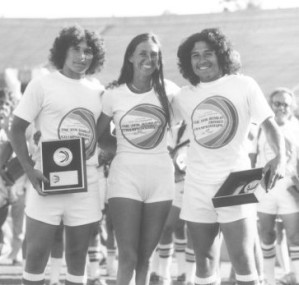
Erwin Velasquez, Jo Cahow, Jens Velasquez, WFC, Rose Bowl, 1976. Next Articles:
History of Ultimate Frisbee
Disc Golf History
Freestyle Frisbee History
Guts Frisbee HistoryNote: This information was referenced and time-lined from disc sport historical and biographical articles including U.S. and Canadian Disc Sports Hall of Fame inductions, Disc Sports Player Federations, and other historical resources. This article was researched, written, and compiled by Frisbee and disc sports historians. The history in this document may change as events, and people are added. For more information contact: discsports@hotmail.com
Linking or reproduction in whole or part with properly linked crediting is permitted (discsportshistory.com).
Top feature photo: Kenyon College students playing with a Frisbee-like flying disc in Ohio, 1950.
Eliot Elisofon—The LIFE Picture Collection/Getty Images.Top page photo collage: Frisbee World Magazines, 1976 -1982.
© 2024 Disc Sports History. All rights reserved.



